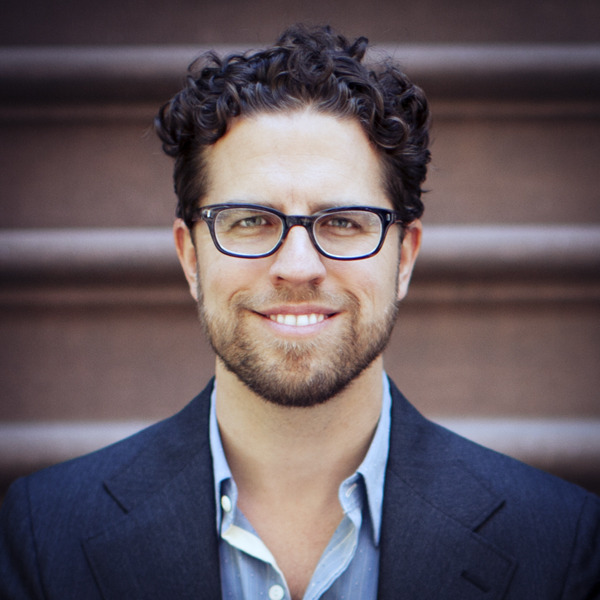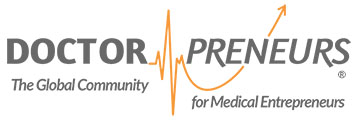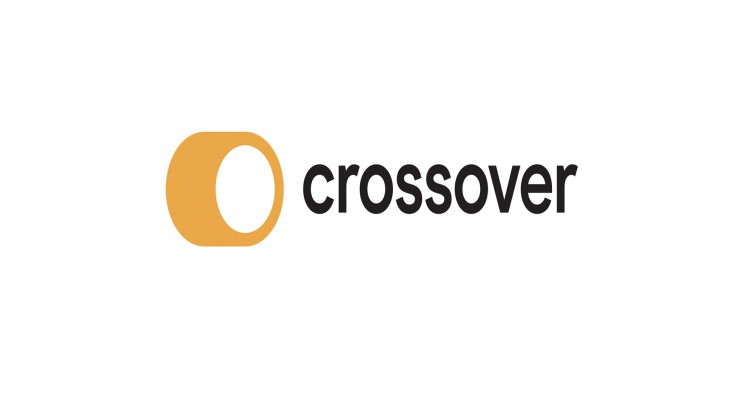Dr. Richard Patragnoni is Co-Founder of Crossover. He is a board-certified Internal Medicine physician. He received his medical degree from Thomas Jefferson University in Philadelphia, Pennsylvania and completed his Internal Medicine training at the University of California, Irvine Medical Center.

Jay Parkinson is Chief Designer at Crossover. He also founded Sherpaa – a provider of asynchronous communication between patients and providers – is partner at The Future Well, and Founder and CMO of Hello Health. He completed his Preventative Medicine Residency
at Johns Hopkins, and his Pediatric Residency at St. Vincent’s Hospital in New York. Jay holds degrees from Washington University in St. Louis, and Penn State Medical School.
Richard, how did you get started on your innovation journey, and how did that lead to founding Crossover?
RP: Prior to starting Crossover, I had a very traditional internal medicine background. I went straight from college to medical school to residency, then started working with a medical group. I then realised that out in the community the health system is really broken. So, I made a ton of lateral moves, thinking I needed to work in a big medical group [to fix things], and that didn’t work so I moved to a small group. Then, I thought I’ve got to start my own practice, and ultimately I realised that truly these were all lateral moves. The common thread was, it is all fee-for-service, and I get paid to do “stuff”. I just have to do more stuff, and that wasn’t going to work [for improving the system] so then I started to dabble around the edges. As I progressed in my career, I really wanted to look for something that could really scale, and really redesign the health care delivery system, as audacious as that sounds.
I wanted to look for some other like-minded folks that really want to come at it from a complete redesign. I had a little group in Southern California and we would meet once a month, just talking about different innovative business models to improve healthcare. At one of those meetings I met Scott Shreeve [Richard’s co-founder at Crossover]. My wife said to me that in some parallel universe Scott is your brother, as he thinks exactly like you do about the healthcare system. We met up at Wahoos Fish Taco and I told him I am in, that I wanted to go for true system change with him.
At that moment, he realised he was not alone and that was the start of Crossover. Admittedly, at that point we did not really have a plan but you needed another person just to believe that something was possible. That is what allowed us to really take the leap to try something more adventurous.
It sounds like starting this group of innovatively-focused physicians really sparked your entrepreneurial journey. What was the motivation for starting this group?
RP: Most physicians enjoy medicine, it just gets polluted with everything around it. We were a group of young physicians that were burnt on the outside but still soft and warm on the inside. We were jaded just enough that we really wanted to try to fix things. So really the idea was to get some minds to go figure out what’s broken and how can we fix it. That’s where it was born.
Jay, you have been described as the first digital doctor amongst other accolades, please, can you describe your innovation journey?
JP: I did a residency in paediatrics, and then I did a residency in preventive medicine and population health. This was focused on systems thinking, so right around then I got really interested in how much medications costs differ at different pharmacies, and did some research and I was like this is insane. A lot of my friends at the time were actually photographers and artists who could not afford health care.
The iPhone had come out June 29th 2007, and my residency was done June 30th. I saw that as having a browser in your pocket, because at the time that was actually the innovation, to have a browser in your pocket, because remember there was no app store for two years after the iPhone came out. So you got your 12 pre-loaded apps, then you had a browser with which you could do a lot of stuff. I figured well I’ll just make my own website, tell the world what I was all about and people could click make an appointment, and that would bring up my Google Calendar, and they could choose the time and tell me their symptoms and their address. I would then send them questions so I knew ahead of time what was wrong, and then make a house call. I’d show up with all the right stuff I needed, and see them in their home or their office, and then we would follow up online and you pay me $150 on PayPal. I could do seven or eight of those a day, and my overhead was nothing. This landed me on The Colbert Report, and it was a viral sensation. Seven million hits on my site in the first month. It was the first viral doctor’s practice.
Seven million hits on my site in the first month. It was the first viral doctor’s practice.
What did Crossover look like in those early days – how did it go from being an idea to an actual execution?
RP: When we first started there were two really critical things. Firstly, we cannot be fee-for-service, so we had to find a different way to get paid. That was absolutely critical.
The second thing was redesign everything – we said that every nook and cranny has to be redesigned from the types of services, how you staff it, the facilities, the software, the experience, everything. Not just on the patient side, but it also has to be a great provider experience. We actually feel like if you create a great provider experience, the patients see the benefit of this, and then everything gets fixed.
We started with a direct primary care approach [direct to consumer subscription-based primary care], and the idea was to create this thing where you pay like 50 bucks a month and people join. We had some good early success, but we had two problems. The first was, and we knew this going in, you are still paying twice for healthcare. I still have to have an insurance plan if something is needed out in the network or something catastrophic happens, so Crossover was duplicative and that doesn’t help with the cost of care.
The second issue was that scaling was one individual by one, or one family by family. Then through a crazy start-up story, we got invited to an RFP, at a time when I did not even know what RFP meant, in the self-funded employer space. That is when we realised that is the same thing as cash-paying, but employers just aggregate thousands of people at a time and that’s when we shifted focus to doing what we wanted to do but in the sandbox of the self-funded employer space. That is where we really got the first score.
If you create a great provider experience, the patients see the benefit of this, and then everything gets fixed.
What do you think is the most innovative thing about what Crossover is doing?
RP: I love this question as the answer is so amazingly plain. We got out of the fee-for-service world, and went straight to being the provider of care. That is it. Be the actual provider and own the patient’s care, which nobody wants to do. It is heavy lifting. That is really what has allowed us to then bring in all the other things that maybe would seem innovative. We have truly built a platform so that now if a point solution is needed we can plug it in.
What have been the biggest challenges you have encountered in growing Crossover?
RP: The first is that most of our clients are large, global companies, which means things move slower than they do in medicine. It can take sometimes many years for clients to come on board. So that was really challenging to get used to. Interestingly, over the past, maybe, year and a half, we are seeing that things are picking up there.
The second thing is the challenge of explaining things that don’t yet exist. It is pretty hard for folks to really understand our transformational approach, our digital and physical hybrid approach. But when they see one of our health centers, then they totally get it.
Jay, you have pioneered many digital health concepts – how would you assess the progress we have made with digital health since you were labelled the first digital doctor?
JP: The development and implementation of tools have been incredible, and that’s what we need. Doctors should be accessible to you when you need them. And since 2012, new digital tools have enabled new ways of delivering care – and now, to match our patient’s preferred mode of communication. Healthcare, at its core, is just communication between humans, augmented by data. Communication between you and your own trusted care team should and can happen online, in-person, and any time. I think we’re seeing real success with this for our customer’s employee population, as well as a high demand from patients.
How did you decide that timing and the exit opportunity for Sherpaa was right with Crossover? What learnings can you share with other entrepreneurs about exiting?
JP: I think my advice is to always do business with someone you know well and who shares your vision. I’ve known Scott for 11 years, and we are both chomping at the bit to bring people a new care delivery model operating at scale. Scott saw that to bring great healthcare to the employees and dependents, Crossover Health needed a way to reach those not near our health centers and a way to serve people in a way that reflects how they communicate and live today. The platform the team created at Sherpaa was a perfect puzzle piece. Crossover pioneered an unprecedented team-based, relationship-driven, brick-and-mortar primary care model and coupled it with a new business model via partnerships with Fortune 50 employers, realising they were the most innovative payers in America and could pay for far more rational, higher quality care for their employees. That was something we could get behind.
What is the 3-5 year plan for Crossover?
RP: We will begin the rollout of our Connected System of Health in 2020 and bring it to new channels beyond employers, including health systems and payers.
What advice do you have for doctors wanting to pursue a path towards innovation?
RP: My advice is to lean into the problems you see that need to be fixed in healthcare. Absolutely nobody sees the real life issues and recurring issues in healthcare as clearly as physicians. Saying that doctors support innovation in healthcare in 2019 is redundant. They’re one in the same. Whether it’s new technology, sharing real-word data, business models that provide better incentives for all parties involved, or network development—all of these enable physicians to maximise their potential, provide superior care and improve the physician-patient relationship.
Lean into the problems you see that need to be fixed in healthcare. Absolutely nobody sees the real life issues and recurring issues in healthcare as clearly as physicians
What is the one thing you would do to improve the overall US health system?
RP: For me, it’s been a focus on improving the delivery of healthcare both locally and nationally. Since getting out of medical school, the location-based disparity has been something I’ve hoped to find solutions for. And it’s coming to life before my eyes with what we’re working on at Crossover with our Connected System of Health. With these new digital tools, we can connect every employee – in headquarters or in remote locations – to remarkable care while simultaneously helping employers get control of their healthcare spending. This allows us to tackle not only the poor access and inefficiency of primary care, but the excessive costs and complexity of the secondary care health system (where 85% of the spend occurs) through Care Management and Care Navigation.


